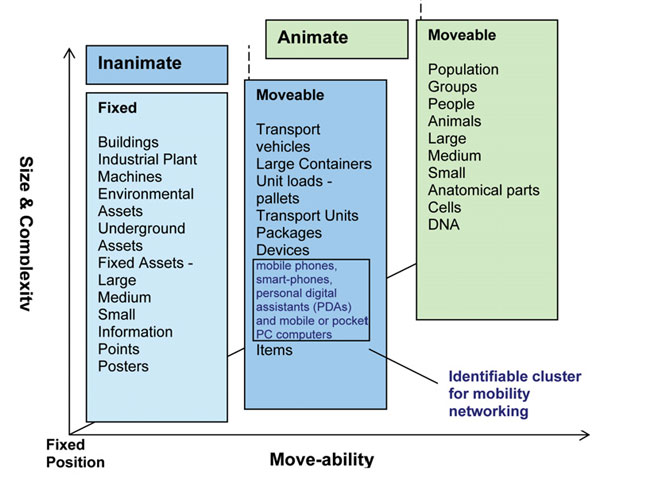"In the weakest version of the Internet of Things, these objects can be identified but do not 'do' anything actively; in the strongest version, objects communicate with each other so that the Internet of Things and Ubiquitous Computing complement each other,” the report notes.
But to get to a more comprehensive overall system architecture, a number of issues must be addressed – and it’s more complicated than some might have guessed. CASAGRAS lays out the following as the list of key topics that must be resolved to get to a workable Internet of Things framework:
Objects and real world awareness - recognizing the nature and life-cycle features of objects as the basis for considering the way in which they might be included and managed within networking structures and data connectivity strategies.
Ontology of identification for objects - expressing the generic nature of identification and the need to accommodate both primary, natural feature identification and secondary, data carrier-based identification within an Internet of Things.
Coding for Identification - identifying the key components for achieving a global unique and type identification system, that can be used with a variety of data carrier technologies and accommodate significant legacy systems of identification coding.
Technologies for identification - both natural feature and data carrier technologies for realizing object-connected or associated identification.
Other object-connected 'edge' technologies - for supporting real world awareness and management of network-connected or simply system-connected objects that embrace the needs for spatial awareness and sensor capability as well as identification.
Communications technologies and networking structures - wired, optical and wireless that can feature within an inclusive structure for an Internet of Things, embracing structures from body area networks to global area networks and accommodating differing network types including ad hoc networks.
The Internet and next generation Internet - distinguishing the issues to be addressed in accommodating the Internet of Things within, or associated with the Internet.
Coding for an inclusive networked infrastructure - considering the issues for coding and messaging within an inclusive structure and how it relates to object identification coding.
Services and the Service Oriented Architecture (SOA) - considering services, federated service needs, evolutionary and scalable developments in services.
Quality of Service (QoS) - considering the important issues of performance and quality of service support requirements.
Security - considering the important issues of security across the inclusive model, and as appropriate with issues of data protection and privacy.
Governance - addressing the important issues of control, maintenance and overall governance of the Internet of Things, including issues of identification coding control.
Standards and regulations - identifying the appropriate international standards and regulations, existing and required, for supporting an inclusive Internet of Things.
Principles and application methodology for object identification and data management - including sensor and location data and distinguished as object-connected (or item-attendant) ICT and positioned as an evolving sector within mainstream ICT.
As just one example, the report notes the challenges of a physical hierarchy of objects (e.g., a desk inside a building) and the different types of objects based on characteristics, as shown in the illustration below.

CASAGRAS has created a number of working groups with participation of experts from across the globe to explore a series of these issues and develop recommendations for standards and frameworks. We’ll keep you posted as progress is made.
What’s your take on the “Internet of Things?” Is CASAGRAS on the right track? Let us know your thoughts at the Feedback button below.
|